When I first reviewed the TRAK kayak over a decade ago, TRAK was an audacious startup with a knack for marketing but little experience in business or paddling. It set out to change the game with a unique gimmick—a hull with jacks in the folding frame, letting the paddler change its shape on the fly.
TRAK 2.0 Specs
Length: 16 ft
Width: 22.5 in
Weight: 42 lbs
Cockpit: 16.5 x 30.5 in
Packed: 53 lbs
Size Packed: 41 x 19 x 9 in
Payload Capacity: 350 lbs
MSRP: $3,599 USD
Why would I want a shape-shifting watercraft, I had wondered. And if I really wanted a folding kayak, wouldn’t I eschew TRAK for a company with a track record? The kayak itself was pretty neat, but I didn’t expect to hear much more from its makers in the ensuing years.
Easy urban kayak storage
Fast forward to 2019 and the landscape has transformed. In the folding kayak space TRAK Kayaks is now the established brand and natural heir to the stalwarts such as Feathercraft and Folbot, which have, well, folded.
The company’s target demographic ranges from younger professionals to baby boomers at their peak of discretionary time and income looking to rediscover themselves outdoors.
Meanwhile, high real-estate prices, denser cities, lower car ownership and the popularity of inflatable SUPs and novelty watercraft, like the Oru Kayak, are ripening the North American market for folding craft, which have never been a fixture here as they have been in Europe.
A performance alternative to Oru Kayaks
A few years ago, TRAK decided instead of improving incrementally on its original design it would apply all the lessons of its first decade into a completely overhauled 2.0 edition, focusing on ease of assembly, portability and convenience.
The company amassed 500 pre-orders primarily through Kickstarter and Indiegogo backers in 2017 and early 2018. After some unexpected delays, the first batch of TRAK Kayaks’ TRAK 2.0 are shipping from TRAK’s factory in the Philippines.
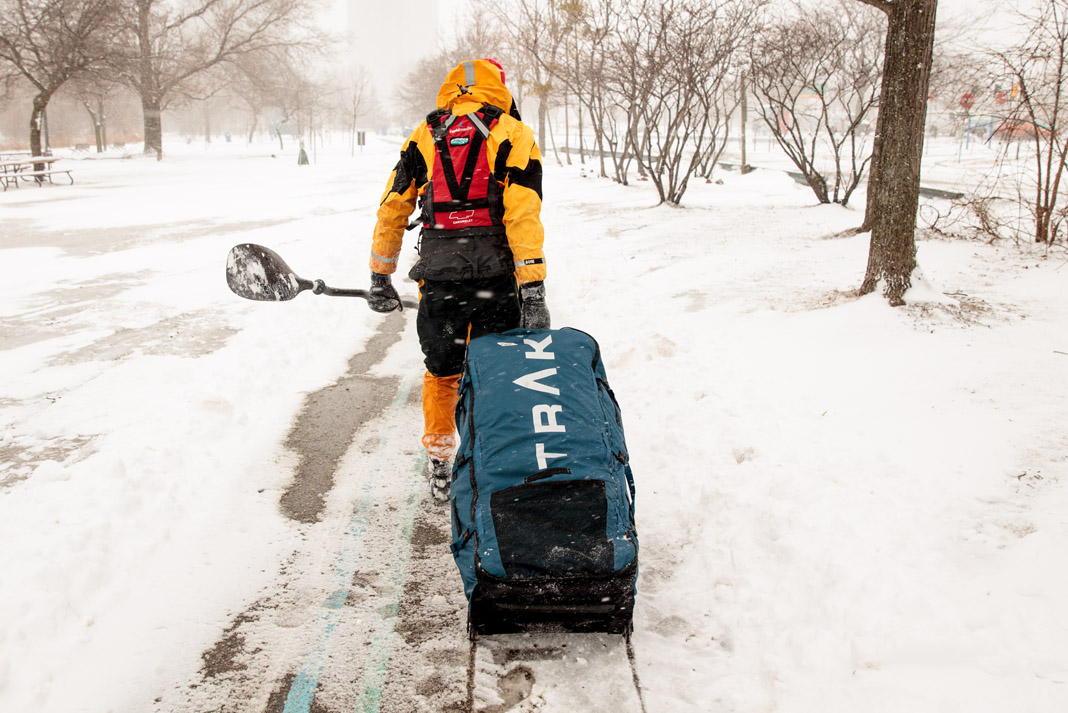
A lightweight kayak is the best kayak for travel
Highlights include lighter materials—upgrading from 6000 to 7000 series aircraft-grade aluminum for some of the frame and carbon fiber for the ribs—resulting in a weight loss of about 10 pounds and a packed size that’s a foot shorter.
The frame snaps together more quickly and easily. And TRAK’s marketing message has matured from something like “the kayak that changes shape!” to “the ultimate general-purpose touring kayak (that just happens to change shape and fold into a rolling suitcase too).”
In a few seconds, I reached a Goldilocks level of maneuverability that normally would have required trying out different boats.
TRAK now transcends the folding-kayak niche and is gunning for mass appeal, promoting a vehicle that is transformative in both a mechanical and spiritual sense.
The TRAK arrived at my door in a large cardboard box. Setup flows intuitively. The color-coded frame, blue for bow and red for stern, snaps together with shock cords, just like tent poles.
A high-performance skin-on-frame kayak
Aided by online videos and instructions, my first setup took an hour. Popping the sleek frame together elicited both an atavistic and space-age joy—kayaking’s skin-and-frame deep past mashed up with aerospace technology.
I wouldn’t mind reenacting this ritual before every paddle. I felt I’d performed a magic trick or created modern art. The second time I built it waterside in under 20 minutes, half expecting applause, and went back from kayak-to-bag even faster without struggle.
The final stage upon launch is to expand three hydraulic jacks in the hull, one on each side and the keel, to tension the skin and adjust the rocker, which changes the waterline length to anywhere between 12 and 15 feet.
I simply cranked up the keel jack until the kayak felt right. In a few seconds, I reached a Goldilocks level of maneuverability that normally would have required trying out different boats. The included sprayskirt has an opening with a roll-down waterproof closure for reaching in and adjusting the jacks.
The TRAK 2.0 is a rocket in the surf, maybe because of its lightness or some unknowable skin-on-frame Zen principle.
The stern is shaped like a skeg, providing for very straight tracking unless you really shorten the waterline with the jack or put the kayak on edge, then it turns instantly.
The hard-chine, shallow-V hull has a high-performance feel, with moderate initial stability and very smooth edging, with no flop or point of no return before the cockpit coaming is well underwater.
There’s no integrated rudder or skeg, but anytime you’d want one—an extreme crosswind maybe—you can adjust the side jacks to give the hull a compensatory zig or zag.
TRAK cites affinity with water as its underlying inspiration and purpose, which their new creation seems to share.
I have no metrics to support any of the aficionados’ claims of skin-on-frame outperforming in rough water by mystically absorbing or smoothing out the energy of the waves; however, from personal experience, I wouldn’t be surprised if there was something to the theory.
A foldable sea kayak that performs like a hard-shell
The TRAK 2.0 is a beautiful, smooth ride, gliding easily through waves, while chop tickles my heels through the subtly vibrating skin and frame.
Acceleration is quick, especially in a following sea, where it catches waves incredibly fast; the 2.0 is a rocket in the surf, maybe because of its lightness or some unknowable skin-on-frame Zen principle.
Apply an edge or a paddle stroke and the 2.0 responds instantly, a trait TRAK attributes to the new carbon-fiber ribs, which makes it stiffer and more responsive overall than previous versions with plastic ribs.
Detracting only slightly from the TRAK’s graceful appearance is the boxiness of the hull around the cockpit where the three jacks are, forming a straight section in the otherwise gently curving frame.
Otherwise, the deck is in many ways sleeker and more beautiful than a hardshell kayak, owing to the low profile of the attachment points for the many bungees and full-length deck-lines; they’re simply sewn into the skin. I wouldn’t be surprised if these attachments are stronger than the plastic fittings on a conventional kayak.
TRAK says its polyurethane skin, which is reinforced with an extra layer at the keel, can withstand just about any abrasion or puncture. An unconditional five-year warranty covers the entire craft.
The comfortable kayak seat isn’t the only feature we love
Many thoughtful design details show off years of engineering: the robust end toggles are screwed right into the hard plastic bow and stern inserts and are coated with rubber, so they are easy to grab; the large rubber handle on the deck zipper doubles as an extra carrying point; the ultra-comfortable padded seat; and the infinitely adjustable padded thigh braces are available in two thicknesses.
Loading the TRAK is tricky because there are no deck hatches, but it can be done. The included two gear and flotation bags hold 55 liters each. TRAK pegs the payload at about 350 pounds, including paddler, and recommends trips of up to 10 days.
At 16 feet, an all-arounder dimension falling squarely between an ocean day/playboat and dedicated tourer, plus a hull that changes shape to accommodate all uses, the TRAK 2.0 really is a paragon of versatility and tradition-meets-technology that will meet most paddlers’ every need.
If you’re interested in ordering one, 50 percent down this spring will get you in line for October or November delivery.
By early 2020 TRAK expects to be caught up and ready to deliver on impulse purchases, with free shipping worldwide to make wild dreams possible. Just fly to some exotic destination and order a TRAK to your hotel.
Tim Shuff lives with his family of four in a small downtown house with no basement or garage. | Feature Photo: Joel Clifton




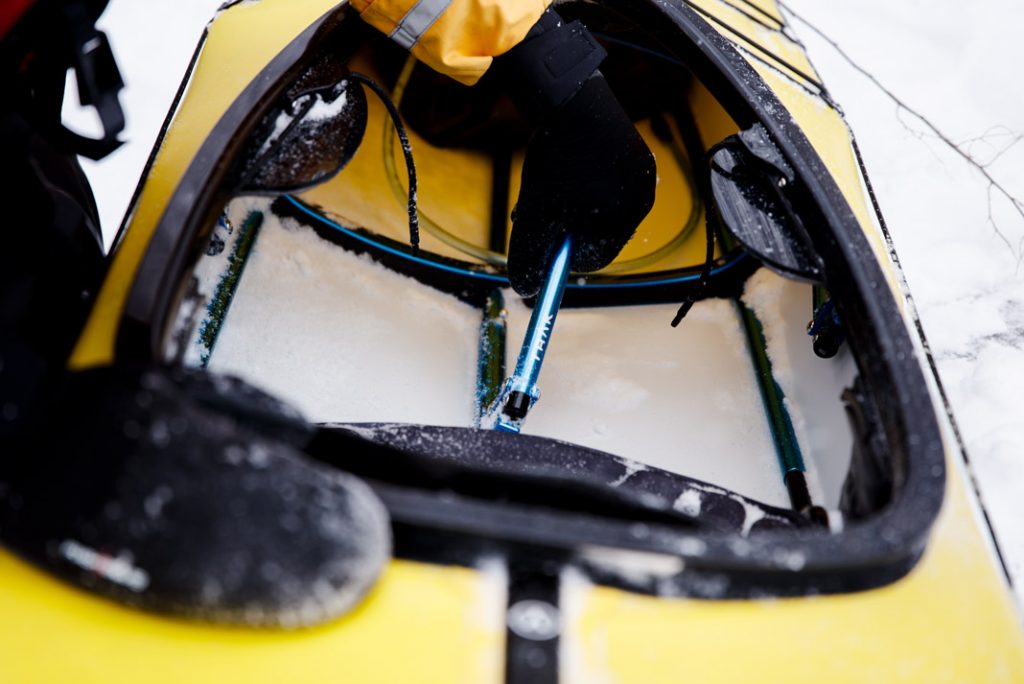
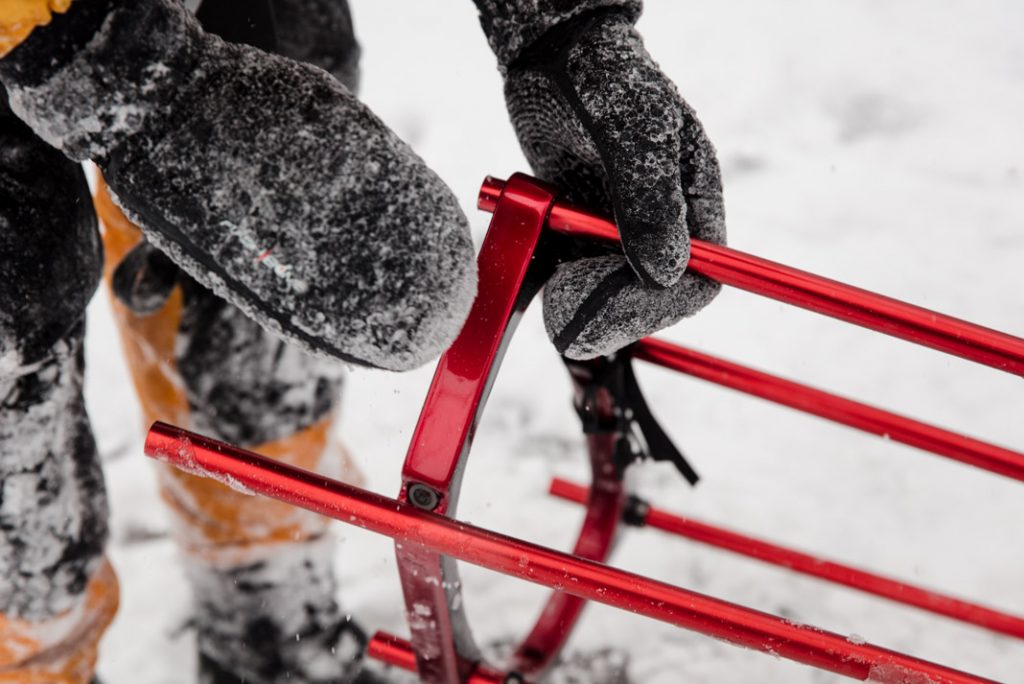

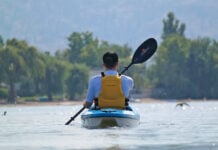
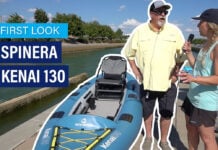
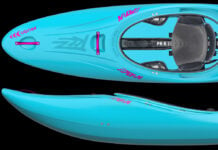


Trak is not delivering the kayaks that customers paid for! Please be responsible with the he paddlers community and make this clear on this review. It’s a great kayak, but it seems very hard to receive one even after you pay in full for it. The company is not answering to customers complaints and it is not being transparent about the production delays. They keep selling new units knowing that they can’t deliver on the time advertised.
As a representative of TRAK, I would like to weigh in a bit on the comment made by @Trak Delays back in October. We actually only just noticed this comment and, for the record, from the time it was posted until now TRAK has actually delivered another 200 kayaks, with another >50 boats shipping in the month of February.
2019 was a year where TRAK delivered more than 400 pre-ordered kayaks. The early production process had several setbacks – we were not shy about this, and adapted our delivery timelines according to the best and most relevant information available to us at the time. Our small team has used several methods to keep clear lines of communication open for all of our customers, ranging from an email update system, a transparent Facebook owners group, and personal communications to our customers. Being that we are not a large team, and that we must keep our focus on both production and continuing our business, we have not been able to provide 100% satisfaction with our individual communications. That said – our team has always provided guaranteed opportunities for personal service through booking update calls through a call-booking link.
TRAK, like any other company out there, must continue to improve our product and processes, but must also continue to market and sell our products as well. Continuing to sell TRAK kayaks and our camps and tours allows us to ensure ongoing service and support to 100% of our customers. The TRAK 2.0 comes with a 5-year tip to tip warranty and, because we are committed to honoring that, we need to continue to expand our business. It can be frustrating to see products marketed when your own has not been delivered – that is completely understandable, but our continued marketing of products ensures long term service. The demand for the TRAK 2.0 remains quite high for now, so wait times are part and parcel with being an early adopter of this kayak.
We are proud of the work we have done and what a kayak like this makes available for paddlers. The reactions to the boat have largely been “worth waiting for” – our positive owner community speaks for itself.
What are you saying?
“The demand for the TRAK 2.0 remains quite high for now, so wait times are part and parcel with being an early adopter of this kayak.”
I’d like to add a word of caution, before you order a trak 2.
I ordered one as a Kickstarter origional backer in May 2017 (No 80. if anyone at Trak wants to contact me) . After many production delays and hold ups over a TWO YEAR period with little communication I was told that the kayak
was in the UK July 2019. By this time I had needed too buy another kayak just to fill the gap and get on the water. But there was yet another catch/problem. Trak now asked me too pay an extra 10% for import tax which was never mentioned on the original Kickstarter sales pitch, just free delivery worldwide.
So after having to shell out for a stand in kayak and waiting over 2 years I just couldn’t believe it. I got no satisfactory reason for this add on cost so just carried on with my existing kayak.
Moving on to this year I decided that I’d have to pay the tax, as I didnt have a leg too stand on, so I got in contact via email. I’ve now been waiting three weeks for a reply. I even meanwhile payed the dam tax….! I found out the UK representative in Devon and called them, but they said they didn’t have my Kayak. So I’m assuming it’s either been sold to someone else or never arrived.
As I said, a word of caution ……this company are difficult to deal with…at the very least expect major delays…!
I’d like to confirm the original commenter’s account of how trak deals with clients who have paid for a trak 2.0 :
first of all the delays/wait times are around 2 years for a kayak (and that’s assuming they’ll deliver when they say they’ll deliver after having pushed back the delivery 3 times so far since i’ve placed my order.)
They DO NOT TELL YOU ABOUT THESE DELAYS WHEN YOU ARE IN TALKS WITH THEM TO BUY A KAYAK. No mention of delays whatsoever. And I asked by the way, and took their word for it. As best I can tell, when you’re pushing to sell sell sell and you can’t even deliver on your existing backlog, it just starts to look like a pyramid scheme, whereby trak sells more kayaks than they can deliver, and are dishonest about it, at the time of sale, and throughout the waiting period. Their response rate pre sale is great, post sale almost non existent. And the constant falsehoods they give you when you manage to get a hold of them, it’s sickening.
“…ranging from an email update system, a transparent Facebook owners group, and personal communications to our customers.” I ordered my Trak 2.0 in March, 2021. I have received Zero updates from Trak as to the progress of my order, and Zero communications from Trak via email. I have joined the FB group, and it is nice, but there is no information as to the progress of the build and the and the estimated delivery date. Trak really, really needs to do better at communicating with people who have forked over a couple of thousand dollars and would like to know how things are progressing. I am trying to plan a trip next Spring using the Trak 2,0, but I have no idea whether the boat will be delivered in time. It is very, very frustrating!!!
Are there any updates on this wait and see if you get it story ? Order then wait years ?
The year is 2024 that i’m reading through the searched reviews, this set here bring me to an abrupt halt on any notion of ordering a TRAK 2.0.
The last critical review here is 2021. Has their delivery much improved ?